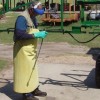 Este documento describe diversos artículos de equipo de protección personal (EPP) que se usan para proteger el cuerpo humano del contacto con pesticidas o residuos de pesticidas. El EPP incluye elementos tales como overoles o trajes protectores, calzado, guantes, delantales, mascarillas, gafas y sombreros. This 12-page fact sheet was written by Frederick Fishel, and published by the UF Department of Agronomy, December 2012.
Este documento describe diversos artículos de equipo de protección personal (EPP) que se usan para proteger el cuerpo humano del contacto con pesticidas o residuos de pesticidas. El EPP incluye elementos tales como overoles o trajes protectores, calzado, guantes, delantales, mascarillas, gafas y sombreros. This 12-page fact sheet was written by Frederick Fishel, and published by the UF Department of Agronomy, December 2012.
http://edis.ifas.ufl.edu/pi243
Tag: Agronomy Department
Identification and Control of Southern Sandbur (Cenchrus echinatus L.) in Hayfields (SSAGR364/AG373)
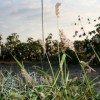 Southern sandbur is an annual grass that grows in pastures and cropland throughout the warm areas of the southern United States from Virginia to California. This native grass is adapted to dry, sandy soils and has a shallow, fibrous root system. It can easily invade a poorly managed field, diminishing the quality of a hay crop or grazing pasture. Southern sandbur seeds start to germinate in late spring, and germination continues through the summer and fall. Flowering occurs in late fall, and growth is consistent until the first frost. This 2-page fact sheet was written by Hunter Smith, Jason Ferrell, and Brent Sellers, and published by the UF Department of Agronomy, December 2012.
Southern sandbur is an annual grass that grows in pastures and cropland throughout the warm areas of the southern United States from Virginia to California. This native grass is adapted to dry, sandy soils and has a shallow, fibrous root system. It can easily invade a poorly managed field, diminishing the quality of a hay crop or grazing pasture. Southern sandbur seeds start to germinate in late spring, and germination continues through the summer and fall. Flowering occurs in late fall, and growth is consistent until the first frost. This 2-page fact sheet was written by Hunter Smith, Jason Ferrell, and Brent Sellers, and published by the UF Department of Agronomy, December 2012.
http://edis.ifas.ufl.edu/ag373
Fungicide Resistance Action Committee's (FRAC) Classification Scheme of Fungicides According to Mode of Action (PI94/PI131)
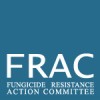 This guide addresses management of pesticide resistance and describes the Fungicide Resistance Action Committee’s (FRAC) classification of fungicides and bactericides registered for agricultural and non-agricultural use in Florida by their modes of action. A cross-reference of common names for active ingredients, along with corresponding examples of their trade names, is also provided. Written by F.M. Fishel and M.M. Dewdney, and published by the UF Department of Agronomy, November 2012.
This guide addresses management of pesticide resistance and describes the Fungicide Resistance Action Committee’s (FRAC) classification of fungicides and bactericides registered for agricultural and non-agricultural use in Florida by their modes of action. A cross-reference of common names for active ingredients, along with corresponding examples of their trade names, is also provided. Written by F.M. Fishel and M.M. Dewdney, and published by the UF Department of Agronomy, November 2012.
http://edis.ifas.ufl.edu/pi131
Florida Crop/Pest Management Profiles: Snap Beans (CIR1231/PI032)
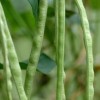 In 2009-2010, Florida growers produced 193.2 million pounds of snap beans, with a value of $0.69 per pound and a total value of $135 million. Snap beans were planted on 36,400 acres, and 32,200 acres were harvested, yielding an average of 6,000 pounds per acre. This 18-page fact sheet was written by W.M. Elwakil and Mark A. Mossler, and published by the UF Department of Agronomy, October 2012.
In 2009-2010, Florida growers produced 193.2 million pounds of snap beans, with a value of $0.69 per pound and a total value of $135 million. Snap beans were planted on 36,400 acres, and 32,200 acres were harvested, yielding an average of 6,000 pounds per acre. This 18-page fact sheet was written by W.M. Elwakil and Mark A. Mossler, and published by the UF Department of Agronomy, October 2012.
http://edis.ifas.ufl.edu/pi032
How to Report Pesticide Misuse in Florida (PI241)
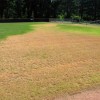 Pesticides provide benefits in many facets of daily life, including protecting food production and health, enhancing our recreational areas, maintaining our rights-of-way, and protecting wildlife, aquatic sites, and natural areas. However, misuse does occur and those who are negligent must take responsibility for their actions. This 3-page fact sheet was written by F. M. Fishel, and published by the UF Department of Agronomy, October 2012.
Pesticides provide benefits in many facets of daily life, including protecting food production and health, enhancing our recreational areas, maintaining our rights-of-way, and protecting wildlife, aquatic sites, and natural areas. However, misuse does occur and those who are negligent must take responsibility for their actions. This 3-page fact sheet was written by F. M. Fishel, and published by the UF Department of Agronomy, October 2012.
http://edis.ifas.ufl.edu/pi241
Production of Miscanthus x giganteus for Biofuel (SSAGR292/AG297)
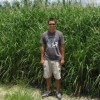 The bioenergy industry has primarily used Miscanthus for combustion in power plants. It has desirable properties of low water and ash contents following a dry-down period before harvest. Current research is focused on its potential as a biomass crop for direct combustion and for lignocellulosic conversion to ethanol and other biofuels. This 3-page fact sheet was written by John Erickson, Curtis Rainbolt, Yoana Newman, Lynn Sollenberger, and Zane Helsel, and published by the UF Department of Agronomy, September 2012.
The bioenergy industry has primarily used Miscanthus for combustion in power plants. It has desirable properties of low water and ash contents following a dry-down period before harvest. Current research is focused on its potential as a biomass crop for direct combustion and for lignocellulosic conversion to ethanol and other biofuels. This 3-page fact sheet was written by John Erickson, Curtis Rainbolt, Yoana Newman, Lynn Sollenberger, and Zane Helsel, and published by the UF Department of Agronomy, September 2012.
http://edis.ifas.ufl.edu/ag297
Cogongrass (Imperata cylindrica) Biology, Ecology, and Management in Florida Grazing Lands (SSAGR52/WG202)
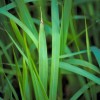 Cogongrass is found on every continent and is considered a weedy pest in 73 countries. In the U.S., cogongrass is found primarily in the Southeast. It was accidentally introduced into Alabama in the early 1900s, and purposely introduced as a potential forage and soil stabilizer in Florida (and other states) in the 1930s and early 1940s. However, soon after investigations began it was realized that cogongrass could be a weedy pest. Since its introduction, cogongrass has spread to nearly every county in Florida. In some cases, it has completely taken over pastures so that it is the only species present. This is a common thread where cogongrass invades; it quickly displaces desirable species and requires intensive management. This 5-page fact sheet was written by B. A. Sellers, J. A. Ferrell, G. E. MacDonald, K. A. Langeland, and S. L. Flory, and published by the UF Department of Agronomy, August 2012.
Cogongrass is found on every continent and is considered a weedy pest in 73 countries. In the U.S., cogongrass is found primarily in the Southeast. It was accidentally introduced into Alabama in the early 1900s, and purposely introduced as a potential forage and soil stabilizer in Florida (and other states) in the 1930s and early 1940s. However, soon after investigations began it was realized that cogongrass could be a weedy pest. Since its introduction, cogongrass has spread to nearly every county in Florida. In some cases, it has completely taken over pastures so that it is the only species present. This is a common thread where cogongrass invades; it quickly displaces desirable species and requires intensive management. This 5-page fact sheet was written by B. A. Sellers, J. A. Ferrell, G. E. MacDonald, K. A. Langeland, and S. L. Flory, and published by the UF Department of Agronomy, August 2012.
http://edis.ifas.ufl.edu/wg202
Identification and Control of Johnsongrass, Vaseygrass, and Guinea Grass in Pastures (SSAGR363/AG372)
 Johnsongrass is a common weed throughout the South and Midwest. People often incorrectly call any weed johnsongrass, but it is one of three grasses found in Florida pastures. Knowing the differences between johnsongrass, vaseygrass, and guinea grass will help with proper weed management. This 3-page fact sheet was written by H. Smith, J. Ferrell, and B. Sellers, and published by the UF Agronomy Department, August 2012. http://edis.ifas.ufl.edu/ag372
Johnsongrass is a common weed throughout the South and Midwest. People often incorrectly call any weed johnsongrass, but it is one of three grasses found in Florida pastures. Knowing the differences between johnsongrass, vaseygrass, and guinea grass will help with proper weed management. This 3-page fact sheet was written by H. Smith, J. Ferrell, and B. Sellers, and published by the UF Agronomy Department, August 2012. http://edis.ifas.ufl.edu/ag372
Phosphorus Fertilizer Recommendations for Sugarcane Production on Florida Organic Soils (SSAGR348/SC091)
 Much of the sugarcane grown in South Florida is on organic soils in the Everglades Agricultural Area, which is a phosphorus-limited system. Phosphorus loads in drainage water in the Everglades Agricultural Area are an environmental concern so it is important for sugarcane growers to use best management practices such as soil testing and to follow fertilizer recommendations. This document contains updated UF/IFAS phosphorus fertilizer recommendations for Florida organic soils. This 7-page fact sheet was written by J. Mabry McCray, Ronald W. Rice, and Alan L. Wright, and published by the UF Department of Agronomy, July 2012. http://edis.ifas.ufl.edu/sc091
Much of the sugarcane grown in South Florida is on organic soils in the Everglades Agricultural Area, which is a phosphorus-limited system. Phosphorus loads in drainage water in the Everglades Agricultural Area are an environmental concern so it is important for sugarcane growers to use best management practices such as soil testing and to follow fertilizer recommendations. This document contains updated UF/IFAS phosphorus fertilizer recommendations for Florida organic soils. This 7-page fact sheet was written by J. Mabry McCray, Ronald W. Rice, and Alan L. Wright, and published by the UF Department of Agronomy, July 2012. http://edis.ifas.ufl.edu/sc091
Common Aquatic Plants of Lake Okeechobee: Identification, Value, and Management (SSAGR362/AG371)
 Aquatic and wetland plants are essential to the ecology of Florida lakes, such as Lake Okeechobee, but they can also pose ecological and water use problems. This 16-page fact sheet provides information about the plants of Lake Okeechobee and outlines the importance of certain plants to the lake, problems caused by some plants, and the methods used to manage plants for the benefit of the entire lake environment. Written by K.A. Langeland and C.C. Jacono, and published by the UF Department of Agronomy, July 2012.
Aquatic and wetland plants are essential to the ecology of Florida lakes, such as Lake Okeechobee, but they can also pose ecological and water use problems. This 16-page fact sheet provides information about the plants of Lake Okeechobee and outlines the importance of certain plants to the lake, problems caused by some plants, and the methods used to manage plants for the benefit of the entire lake environment. Written by K.A. Langeland and C.C. Jacono, and published by the UF Department of Agronomy, July 2012.
http://edis.ifas.ufl.edu/ag371
Hydrilla Management in Florida Lakes (SSAGR361/AG370)
Hydrilla is the most aggressive invasive plant in Florida waters. It can provide some benefits to fish and wildlife at low levels of coverage, but it also can have major detrimental impacts to water uses, causing substantial economic and environmental hardships. This 6-page fact sheet was written by Stacia A. Hetrick and Ken A. Langeland, and published by the UF Department of Agronomy, March 2012.
http://edis.ifas.ufl.edu/ag370
Estimating Amount of Forage in Hay Fields and Pastures (SSAGR360/AG369)
 Forage serves as the primary source of nutrients for livestock in Florida, and efficient use of forage is critical to the livelihood of Florida farmers and ranchers. Estimating the amount of forage in a pasture can provide useful information when making management decisions. There must be enough material in the field to justify the cost of using harvesting equipment; otherwise, the area should be grazed. This 2-page fact sheet contains instructions for a simple method to determine the approximate amount of forage in hay fields and pastures. Written by T. Wilson, C. Sanders, J. Breman, and L. Sollenberger, and published by the UF Department of Agronomy, March 2012.
Forage serves as the primary source of nutrients for livestock in Florida, and efficient use of forage is critical to the livelihood of Florida farmers and ranchers. Estimating the amount of forage in a pasture can provide useful information when making management decisions. There must be enough material in the field to justify the cost of using harvesting equipment; otherwise, the area should be grazed. This 2-page fact sheet contains instructions for a simple method to determine the approximate amount of forage in hay fields and pastures. Written by T. Wilson, C. Sanders, J. Breman, and L. Sollenberger, and published by the UF Department of Agronomy, March 2012.
http://edis.ifas.ufl.edu/ag369
Diagnosing Herbicide Injury in Cotton (SSAGR358/AG367)
This 10-page fact sheet aids in the diagnosis of herbicide injury by providing pictures and descriptions of behavior in plants and symptoms associated with different herbicides organized by mode of action. Written by Sarah Berger and Jason Ferrell, and published by the UF Department of Agronomy, February 2012.
http://edis.ifas.ufl.edu/ag367
Control of Lantana in Pastures (SSAGR359/AG368)
Lantana is currently one of the top 10 most troublesome weeds in Florida. Although it is still sold as an ornamental, commercial varieties are sterile and considered to be non-invasive. It can quickly invade disturbed sites by producing plant toxins in its roots and stems, that either slow the growth of other plants or totally remove them. These leaf toxins are damaging to grazing animals. If animals consume the leaves, they often begin to show symptoms of skin peeling or cracking. Once animals show these symptoms, there is little or no treatment that can reverse the process. Although lantana’s leaves are poisonous, its berries are not. Birds readily consume the fruit and disperse the seed. This 2-page fact sheet was written by J. Ferrell, B. Sellers, and E. Jennings, and published by the UF Department of Agronomy, February 2012.
http://edis.ifas.ufl.edu/ag368
Refillable Containers and Secondary Containment Requirements for Agricultural Pesticides in Florida (PI240)
 This 4-page fact sheet discusses the requirements for selection and design of containers and dispensing areas,as well as operation, inspection, maintenance and recordkeeping. Written by Bonnie Wells and F.M. Fishel and published by the UF Department of Agronomy, January 2012.
This 4-page fact sheet discusses the requirements for selection and design of containers and dispensing areas,as well as operation, inspection, maintenance and recordkeeping. Written by Bonnie Wells and F.M. Fishel and published by the UF Department of Agronomy, January 2012.
http://edis.ifas.ufl.edu/pi240
Applying Pesticides in Compliance with the National Pollutant Discharge Elimination System (NPDES) (PI239)
 On October 31, 2011, EPA issued a final National Pollutant Discharge Elimination System (NPDES) Pesticide Generic Permit for point source discharges from the application of pesticides to waters of the United States. This 10-page fact sheet explains what is now required for pesticide applications in Florida. Written by F.M. Fishel, and published by the UF Department of Agronomy, December 2011.
On October 31, 2011, EPA issued a final National Pollutant Discharge Elimination System (NPDES) Pesticide Generic Permit for point source discharges from the application of pesticides to waters of the United States. This 10-page fact sheet explains what is now required for pesticide applications in Florida. Written by F.M. Fishel, and published by the UF Department of Agronomy, December 2011.
http://edis.ifas.ufl.edu/pi239
Calcium Silicate Recommendations for Sugarcane on Florida Organic Soils (SSAGR350/SC092)
 Although silicon isn’t an essential plant nutrient, adding calcium silicate to soils low in soluble silicon increases yield an average of 20%. This 5-page fact sheet describes calcium silicate recommendations for sugarcane on organic soils, developed using field studies at several locations. Written by J. Mabry McCray, Ronald W. Rice, and Leslie E. Baucum, and published by the UF Department of Agronomy, August 2011. (UF/IFAS Photo: Josh Wickham)
Although silicon isn’t an essential plant nutrient, adding calcium silicate to soils low in soluble silicon increases yield an average of 20%. This 5-page fact sheet describes calcium silicate recommendations for sugarcane on organic soils, developed using field studies at several locations. Written by J. Mabry McCray, Ronald W. Rice, and Leslie E. Baucum, and published by the UF Department of Agronomy, August 2011. (UF/IFAS Photo: Josh Wickham)
http://edis.ifas.ufl.edu/sc092
Production of Biofuel Crops in Florida: Sweet Sorghum (SSAGR293/AG298)
 Varieties of sorghum with a high concentration of soluble sugars are attractive as a potential energy crop because of the easy accessibility of readily fermentable sugars combined with very high yields of green biomass. Similar to sugarcane, the sap of sweet sorghum is extracted by milling, and can be easily fermented to produce ethanol. Other products from sweet sorghum include syrup, molasses, and crystal sugar. This 3-page fact sheet was written by Wilfred Vermerris, John Erickson, David Wright, Yoana Newman, and Curtis Rainbolt, and published by the UF Department of Agronomy, December 2011.
Varieties of sorghum with a high concentration of soluble sugars are attractive as a potential energy crop because of the easy accessibility of readily fermentable sugars combined with very high yields of green biomass. Similar to sugarcane, the sap of sweet sorghum is extracted by milling, and can be easily fermented to produce ethanol. Other products from sweet sorghum include syrup, molasses, and crystal sugar. This 3-page fact sheet was written by Wilfred Vermerris, John Erickson, David Wright, Yoana Newman, and Curtis Rainbolt, and published by the UF Department of Agronomy, December 2011.
http://edis.ifas.ufl.edu/ag298
Bracken Fern Control in Pastures (SSAGR357/AG366)
 Bracken fern is a poisonous plant common along tree lines, in forest openings, and around building borders. Animals will consum it when adequate forage is not available. Learn more in this 2-page fact sheet was written by J. Ferrell, B. Sellers, and T. Wilson , and published by the UF Department of Agronomy, December 2011.
Bracken fern is a poisonous plant common along tree lines, in forest openings, and around building borders. Animals will consum it when adequate forage is not available. Learn more in this 2-page fact sheet was written by J. Ferrell, B. Sellers, and T. Wilson , and published by the UF Department of Agronomy, December 2011.
http://edis.ifas.ufl.edu/ag366
Production of Giant Reed for Biofuel (SSAGR318/AG327)
 Giant reed is currently being evaluated as a potential biomass energy crop in Florida, even though some scientists and those in other states consider it to be a noxious or invasive weed. This 4-page fact sheet discusses the adaptation and production of giant reed as a potential energy crop and presents measures for controlling giant reed as an escaped weed. It does not give specific recommendations on whether it is better to control giant reed or produce it for biofuel. Written by Dennis Odero, Robert Gilbert, Jason Ferrell, and Zane Helsel, and published by the UF Department of Agronomy, November 2011.
Giant reed is currently being evaluated as a potential biomass energy crop in Florida, even though some scientists and those in other states consider it to be a noxious or invasive weed. This 4-page fact sheet discusses the adaptation and production of giant reed as a potential energy crop and presents measures for controlling giant reed as an escaped weed. It does not give specific recommendations on whether it is better to control giant reed or produce it for biofuel. Written by Dennis Odero, Robert Gilbert, Jason Ferrell, and Zane Helsel, and published by the UF Department of Agronomy, November 2011.
http://edis.ifas.ufl.edu/ag327